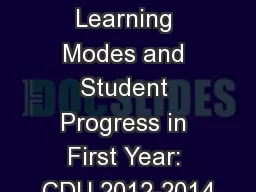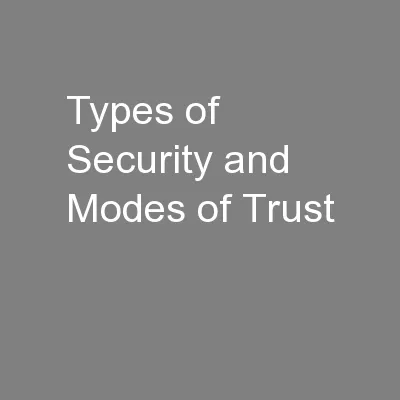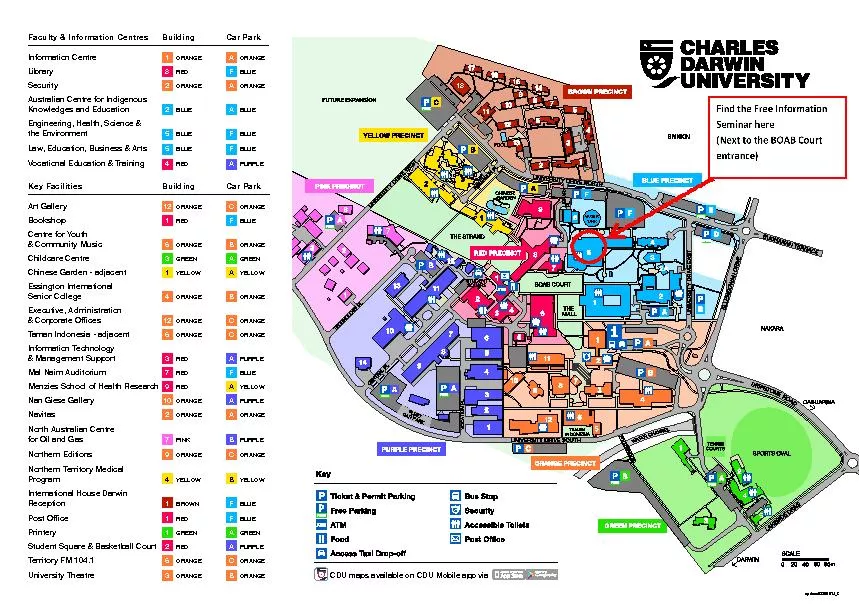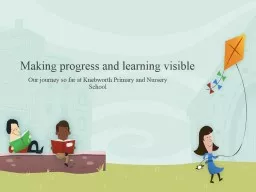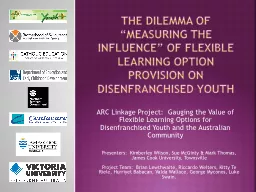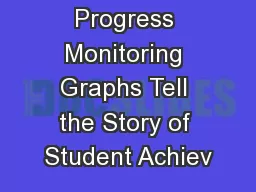PPT-Flexible and Online Learning Modes and Student Progress in First Year: CDU 2012-2014
Author : stefany-barnette | Published Date : 2018-02-10
for the Common Unit Committee and Office of Learning and Teaching Bill Tyler Charles Webb Nicola Rolls Sharon Bridgeman Malcolm Flack Explaining University Retention
Presentation Embed Code
Download Presentation
Download Presentation The PPT/PDF document "Flexible and Online Learning Modes and ..." is the property of its rightful owner. Permission is granted to download and print the materials on this website for personal, non-commercial use only, and to display it on your personal computer provided you do not modify the materials and that you retain all copyright notices contained in the materials. By downloading content from our website, you accept the terms of this agreement.
Flexible and Online Learning Modes and Student Progress in First Year: CDU 2012-2014: Transcript
Download Rules Of Document
"Flexible and Online Learning Modes and Student Progress in First Year: CDU 2012-2014"The content belongs to its owner. You may download and print it for personal use, without modification, and keep all copyright notices. By downloading, you agree to these terms.
Related Documents

